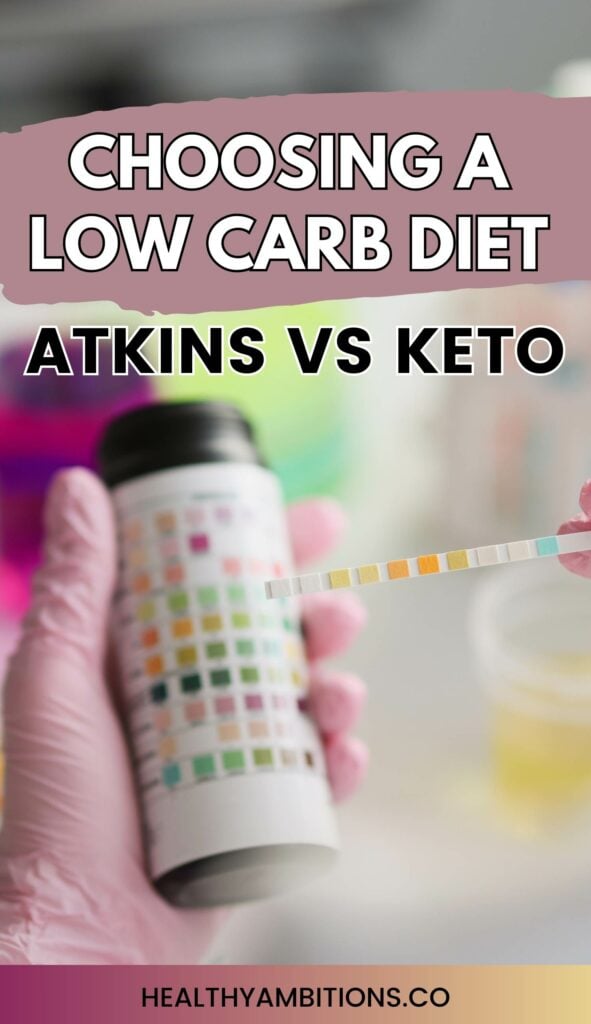Atkins vs Keto: Two Sides of the Same Coin?
Thinking about giving carbs the cold shoulder? You’re certainly not alone. For years, Atkins and Keto have been the favorite choices for people who want to live that low-carb life.
But here’s the thing: At a glance, these two diets seem like they could be long-lost siblings. So, what sets them apart?
Is it all just branding, or are there genuine differences that you should know about?
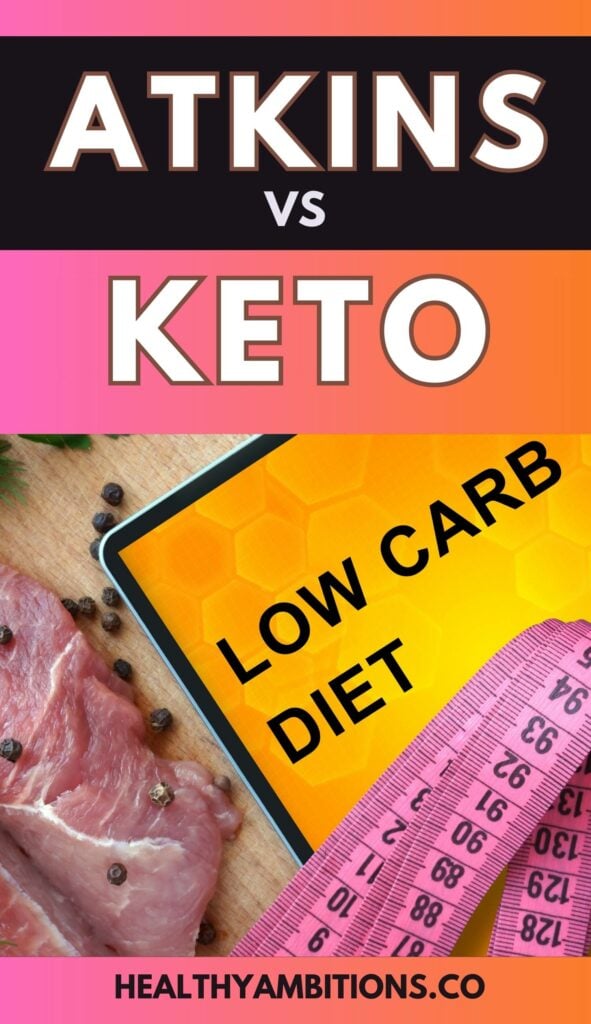
This post may contain affiliate links, which helps keep this content free. Please read our disclosure for more info.
Why Low-Carb?
Why are low-carb diets such crowd-pleasers? Well, there’s some solid science behind it!
Cutting back on carbs means your body has to find an alternative energy source, and that usually means turning to fat. When you burn fat for fuel, it’s like saying, “See ya later!” to those extra pounds.
And guess what? The benefits don’t stop at weight loss. A low-carb approach can have some pretty stellar effects on other aspects of your health.
For example, if you’re keeping tabs on your blood sugar, reducing carb intake can help stabilize those levels. No more sugar spikes and crashes—talk about a win!
But that’s not all. A diet low in carbs can also improve heart health by reducing triglycerides and increasing HDL cholesterol (that’s the good kind).
And let’s not forget the potential boost to your mental focus and energy levels. Yes, by saying goodbye to carbs, you could actually feel more alert and energetic.
Low-carb diets have more going for them than just the promise of a slimmer waistline!
Atkins Diet: The Basics

The Atkins diet starts you off on a strict low-carb regimen and then gradually eases you into a more flexible eating plan.
This diet is designed with four distinct phases to help you maximize your fat-burning potential while allowing some dietary freedom as you progress.
The first phase, known as Induction, is a carb-cutting extravaganza. You’re looking at around 20-25 grams of net carbs per day to kickstart the fat-burning process.
It’s a quick way to get your metabolism to switch gears and burn fat instead of carbs. Protein and fats will be your new best friends during this phase.
Next up, we have the Balancing phase. Now that your body is getting the hang of burning fat, you can reintroduce some carbs back into your life.
We’re talking nuts, seeds, and a wider range of veggies. The goal is to find out how many carbs you can consume while still losing weight. It’s like a dietary game of balance!
Then comes the Pre-Maintenance phase. Here, you’re inching closer to your goal weight. The carb count can go up a little more, but not so much that you halt your weight loss.
You’re fine-tuning your diet to figure out what you can sustain in the long run. It’s all about setting yourself up for lasting success.
Last but not least is the Maintenance phase. By this point, you’ve reached your goal weight (congrats, by the way!). Now it’s about keeping those pounds off for good.
You’ve got a pretty good idea of what your daily carb intake should be to maintain your weight, so now you can enjoy a broader range of foods without going overboard.
The beauty of Atkins is in its phased approach. You start with restrictions to initiate change, and then you adjust as you go along. It’s like training wheels for a low-carb lifestyle!
Keto Diet: The Basics

In this diet, there’s no “easing into it” or “phasing it out.” From day one, you’re committed to a lifestyle where fats are your primary source of energy.
So, why all the fat? The objective is to reach a metabolic state known as ketosis.
In ketosis, your body has depleted its carbohydrate stores and switches over to burning fat for fuel. This is the Keto diet’s claim to fame, and it’s what sets it apart from other low-carb options.
To get there, you’re looking at a daily macronutrient breakdown that’s heavy on fats—about 70-80% of your total caloric intake, to be exact.
But wait, what exactly are you eating on Keto? Think fatty cuts of meat, avocados, cheese, and oils. Meanwhile, carbs are limited to around 5-10% of total calories, and proteins make up the rest.
Yep, even vegetables need to be chosen carefully; you’ll be opting for low-carb varieties like spinach and kale over starchy ones like potatoes and corn.
For Keto, consistency is key. Straying from the high-fat, low-carb guidelines can knock you out of ketosis, which sort of defeats the purpose.
So, you’re in it for the long haul—or at least as long as you decide to stick with the Keto lifestyle.
The Keto diet is all about maintaining a constant state of ketosis to reap the benefits, from weight loss to potential improvements in mental clarity and energy levels.
It’s a straightforward approach, but one that calls for commitment and a close eye on your daily food choices.
Similarities Between Atkins and Keto
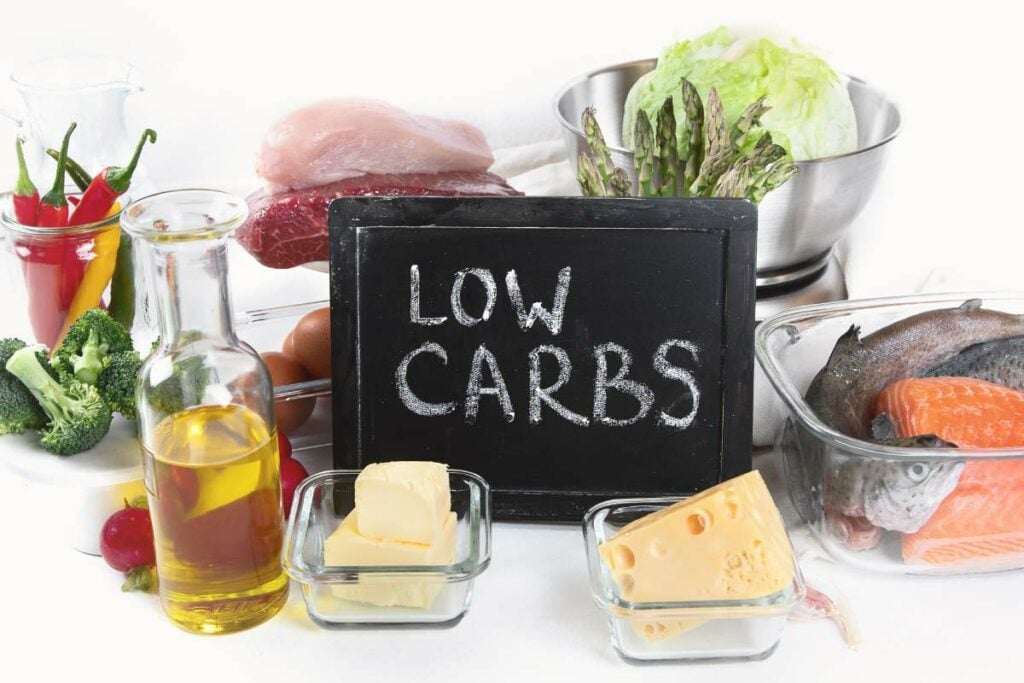
On the surface, Atkins and Keto share some key traits. Both diets prioritize a low-carb approach, making them go-to options for those looking to reduce their carbohydrate intake.
Yes, if it’s a low-carb lifestyle you’re after, either of these diets would fit the bill.
Another similarity? Protein is a key player. In both Atkins and Keto, a significant amount of your daily caloric intake will come from protein.
So if you’re someone who enjoys meats, fish, and other protein-rich foods, you’ll find a lot to like in both diets.
The core aim of both Atkins and Keto is to change how your metabolism works, shifting from burning carbohydrates for energy to burning fat.
This metabolic shift is a central goal for both diets and is key to their effectiveness for weight loss and other potential health benefits.
Both diets claim to offer more than just a path to weight loss. Improved blood sugar control, better cholesterol levels, and even increased mental focus are listed advantages for both Atkins and Keto.
While they might seem quite similar in their general aims and benefits, they have distinct and different approaches to achieving those goals.
Key Differences

The most obvious difference is how they approach the low-carb lifestyle. Atkins comes with different phases, each one allowing you to adjust your carb intake over time. It’s a step-by-step approach that starts strict but loosens up as you go along.
Keto, on the other hand, is a one-size-fits-all situation from the get-go. There are no phases or steps to ease you into it. You start with a low-carb, high-fat diet and stick with it. There’s little wiggle room for adjustments in terms of your macronutrients.
Another key difference lies in your long-term relationship with carbs. Atkins lets you reintroduce some carbs back into your diet as you move from one phase to another. This offers a level of flexibility and makes it a more adaptable choice for a long-term eating plan.
Keto keeps you on a tight leash when it comes to carbs. From start to finish, you’re expected to keep carbs low and fats high. The diet is more rigid in its guidelines, essentially saying, “Here are the rules; stick to them.”
So, while both diets might seem similar at a glance, their approaches to carbs and their flexibility make them distinct from each other.
Atkins gives you a structured plan with room for adaptation, while Keto is more of a strict, consistent regimen.
How to Choose What’s Right For You
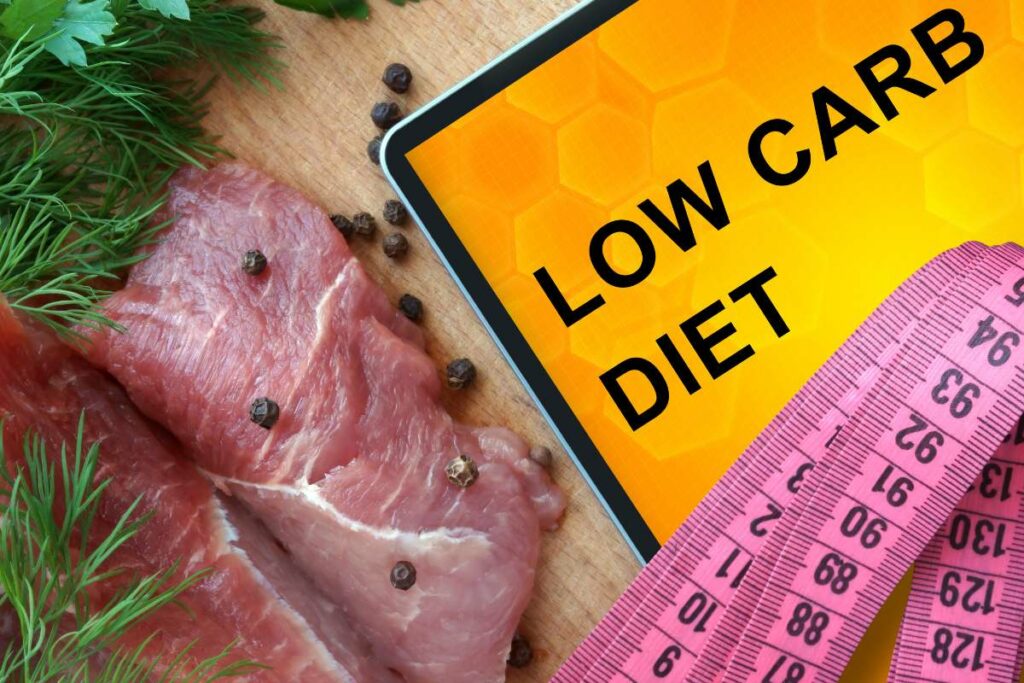
Picking between Atkins and Keto is a bit like choosing between two flavors of ice cream: both are delightful in their own right, but your personal tastes and needs will sway your decision.
First, consider your lifestyle. Are you someone who enjoys a gradual change, or do you prefer to make a big leap all at once? Atkins offers a phased approach, while Keto is an all-in commitment from day one.
Next, think about the foods you love. Are you a fan of fatty cuts of meat, oils, and avocados? Then you might enjoy the high-fat focus of the Keto diet.
But if you appreciate a bit more variety and the idea of reintroducing some carbs down the line appeals to you, Atkins might be more your speed.
Your health status is another factor to consider. If you have specific medical conditions like diabetes or heart issues, one diet might be more appropriate than the other.
And don’t forget about long-term sustainability. Do you see yourself following a strict set of dietary rules for an extended period, or would you prefer something with a little more flexibility?
Atkins allows for some dietary freedom as you reach your goals, while Keto requires consistent adherence to its low-carb, high-fat guidelines.
It’s worth noting that both diets have their challenges, so consider your willingness to track macros, prepare specialized meals, and make lifestyle adjustments. Your personal commitment level can be a game-changer in how effective either diet will be for you.
Choosing What’s Right For You and Your Next Steps
Deciding between Atkins and Keto involves a few considerations. Think about how you handle change; Atkins eases you in, while Keto goes all in from day one.
Ponder your food loves. If fatty foods excite you, Keto may be your jam. But if you like the idea of more food variety over time, Atkins could be the one.
It’s also essential to consider your health. Consulting with a healthcare provider can offer personalized insights into which diet might better suit your medical needs.
And don’t forget about the long-term; Atkins allows some flexibility, while Keto is more of a constant regimen.
Feeling a pull towards Keto? Why not dip your toes into the lifestyle with the 21-Day Keto Fat Loss Challenge?
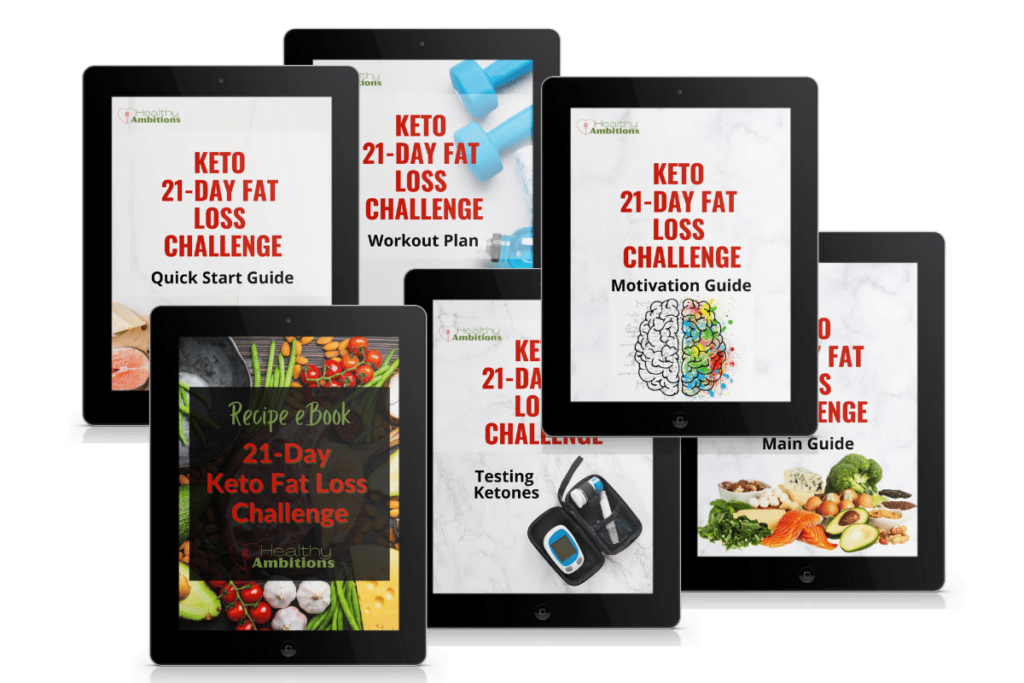
This challenge offers a wealth of knowledge, including busting the 10 biggest weight loss myths, teaching supplements and nutrition tricks for faster fat burning and insights into habits of people who maintain a fit lifestyle.
You’ll also get the lowdown on at-home fat-burning workouts, along with straightforward eating advice divided into three simple stages.
So go ahead, take a moment to think about your lifestyle choices, consult healthcare professionals, and maybe even give the 21-Day Keto Fat Loss Challenge a whirl.
